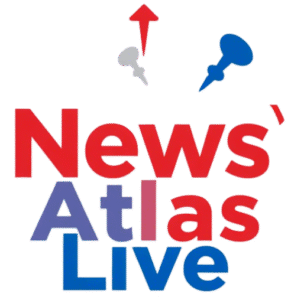
Planning efficient and accessible bus routes in 2025 requires precise information about operational standards, regional frameworks, and scheduling patterns. News On Trip compiles current developments in the design and regulation of public bus systems worldwide. As urban areas expand and intercity transit increases, managing public transport routes becomes a critical component of global mobility systems.
This article offers a professional overview of structured bus route planning systems, featuring updates from news on trip. It includes route scheduling formats, passenger flow management, real-time monitoring technologies, and regulatory structures used across continents. The aim is to present factual and updated insights into how transport networks are structured and communicated.
Regional Frameworks for Bus Route Planning
Urban Bus Network Design
Cities around the world implement structured models to develop urban bus services. These systems often reflect route hierarchy, demand concentration, and terminal placement. Key elements in planning urban bus routes include:
- Corridor-based planning where main routes are reinforced by feeder services
- Loop vs. linear route models depending on area density and zoning
- Schedule frequency based on peak hour assessments
- Zone coverage compliance with city planning policies
News on trip categorizes these patterns across regions such as Southeast Asia, Western Europe, and North America, tracking updates from local transport authorities.
Intercity and Regional Connectivity Plans
Intercity bus services depend on provincial coordination or national frameworks. The 2025 updates collected by news on trip show that several countries have adopted:
- National-level schedules aligning city-to-city transport grids
- Platform reservation systems integrating with online ticketing apps
- Combined route strategies linking remote towns with metropolitan centers
- Standardized passenger handling processes across bus terminals
Intercity planning ensures that longer routes remain predictable and manageable while integrating technology for transparency.
Bus Scheduling and Time Structuring
Fixed vs. Dynamic Schedules
Buses operate under fixed or dynamic models. Route planning in 2025 reflects a hybrid model in many nations:
- Fixed schedules are maintained for express and high-volume routes
- Dynamic adjustments allowed for event-based, seasonal, or low-density routes
- AI-assisted modeling for stop timing based on historical traffic
- Integration with real-time demand indicators and road condition reports
According to news on trip, this hybridization supports efficiency and adaptability in both urban and regional systems.
Time Slot Allocation and Route Rotation
To maintain fleet balance, transit systems apply time slot planning to their routes. Components include:
- Staggered bus frequency during peak and off-peak hours
- Rotation of drivers and vehicles based on operational zones
- Weekend vs. weekday scheduling differences
- Public holiday and emergency rerouting notices
News on trip tracks city-level transport department schedules that affect public bus route planning on a weekly and monthly basis.
Passenger Access and Route Visibility
Mapping and Visibility for Users
Route transparency is a critical part of public communication. Transit authorities employ the following practices:
- Interactive mobile maps with stop-by-stop details
- Route boards with color-coded zone segmentation
- QR-based mobile scanning to access stop schedules
- Digital displays at terminals indicate next arrivals
News on trip features a compilation of digital mapping standards used in global cities and updates from transit system upgrades.
Signage and Announcement Systems
Route visibility also depends on how routes and destinations are marked. Standards observed in 2025 include:
- LED signboards on buses displaying destination and route ID
- In-vehicle stop announcement systems in multiple languages
- Bus shelter signs showing route overlays and upcoming buses
- Accessible announcements via auditory and visual media
News on trip includes city-specific updates when new signage guidelines are released, particularly in multilingual or high-tourism areas.
Fleet Distribution and Route Resource Allocation
Vehicle-to-Route Assignment
Route efficiency also involves distributing vehicles based on:
- Route length and stop frequency
- Passenger volume and bus seating capacity
- Geographic challenges like hill routes or urban congestion zones
- Fuel type preference (electric, diesel, hybrid) in route-specific allocations
News on trip follows transit agency releases about new fleet assignments, highlighting sustainable or electric-first route innovations.
Maintenance-Based Rotation Protocols
To ensure route reliability, buses are often rotated based on maintenance schedules:
- Preventive servicing aligned with route mileage
- Replacement cycles for vehicles nearing operational limits
- Mid-route monitoring for emergency maintenance needs
- Assigned depots for overnight storage based on terminal proximity
These planning aspects ensure uninterrupted movement across global travel zones, monitored by news on trip through logistics coordination reports.
Integration with Other Travel Modes
Multimodal Route Planning
Public buses are increasingly integrated with train stations, airports, and ferry terminals. Bus route planning includes:
- Route overlaps with last-mile transit services
- Dedicated bus lanes linking to regional railway hubs
- Express shuttles operate from airport terminals to city centers
- Route schedules are designed to connect with ferry boarding times
News on trip logs, multimodal infrastructure updates that influence bus route coordination across travel systems.
Smart Ticketing and Route Synchronization
Planning in 2025 incorporates digital integration of route access, including:
- Mobile passes with tap-on, tap-off capability
- Ticketing linked to GPS-tracked bus movement
- Synchronization of route frequency with other transport modes
- Seamless rebooking when buses are delayed or rerouted
These tools allow real-time control over public travel routes, enhancing network reliability through platforms monitored by news on trip.
Policy and Compliance Considerations
Regulatory Route Planning Frameworks
Bus planning follows legal requirements around passenger rights, accessibility, and environmental policy. Areas of focus include:
- Compliance with route distance limitations for urban zones
- Accessibility compliance (low-floor buses, ramps, handrails)
- Designated travel zones for environmental impact reduction
- Driver certification requirements per route type
News on trip tracks international transport policy updates to understand how regulation shapes route planning.
Monitoring, Evaluation, and Public Feedback
To refine route planning, public transport systems allow:
- Feedback collection through apps and online surveys
- Usage data analysis by stop, route, and schedule block
- Adjustments based on major event planning or seasonal demand
- Evaluation reports are released quarterly or annually
News on trip highlights planning shifts based on periodic public consultation and institutional reviews.
Global Travel Trends Impacting Bus Planning
Tourism and Temporary Route Design
In areas of heavy tourism, 2025 planning includes temporary or seasonal bus routes. Examples include:
- Beach or mountain access shuttle buses
- Cultural event-specific circulator routes
- Night buses operate during local festivals
- Cross-border tour buses with bilateral access permissions
These dynamic routes are reported by news on trip and integrated into world travel news summaries for public awareness.
Cross-National Bus Corridors
Some bus services now operate across countries. The protocol includes:
- Customs stop integration into cross-border routes
- Mutual schedule alignment across national transport authorities
- Ticketing in local and foreign currencies
- Entry and exit documentation processes onboard
News on trip covers updates from bilateral transportation pacts affecting inter-country bus routes.
Technology in Bus Route Planning 2025
AI-Driven Route Optimization
Artificial intelligence helps optimize route networks by evaluating:
- Passenger usage patterns
- Traffic and congestion records
- Fuel usage on differing terrains
- Historical delay frequency per route
These automated systems inform route changes and service timing, regularly tracked by news on trip.
Digital Twin Models for Transit Simulation
Several transport agencies have adopted simulation models of their bus routes to test new paths and evaluate scheduling. These models simulate:
- Urban disruption scenarios
- Route efficiency comparisons
- Stop-by-stop energy modeling
- Passenger distribution across zones
News on trip reports, global adoption of digital modeling tools, and their integration into urban planning systems.
Conclusion
Bus route planning in 2025 is influenced by evolving mobility demands, technological adoption, regional regulation, and passenger expectations. This article presented a detailed breakdown of bus route planning systems observed across urban, intercity, and international levels. Supported by structured transit frameworks and smart routing technologies, global cities continue to refine public access through precise scheduling, multimodal links, and public communication.
As a news on trip remains an active observer of global travel, travel news, and cross-border mobility infrastructure, its updates contribute to more reliable, accessible, and data-driven public transport systems. With this report, stakeholders can examine planning models, map integration strategies, and real-time compliance used by bus systems in 2025 and beyond.
